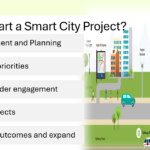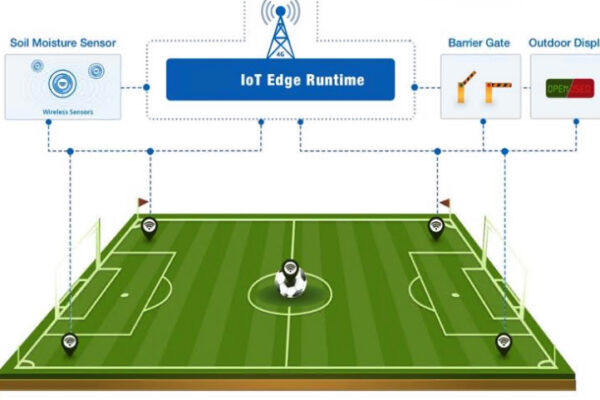Making Your Smart City Journey a Reality in 2025: Key Steps for Success
In our previous posts, we explored the foundational concepts of smart cities and detailed the essential technologies needed for implementation. Now, let’s dive into how cities can practically kickstart their smart city initiatives, drawing insights from a recent webinar presented by Varidx, an award-winning smart city solutions provider.
The Smart City Evolution: From Concept to Reality
The journey to becoming a smart city isn’t just about implementing technology – it’s about creating meaningful impact for residents. As we’ve seen in our earlier discussions, successful smart cities focus on efficiently using digital technologies to improve service delivery, operational efficiency, and quality of life for residents.
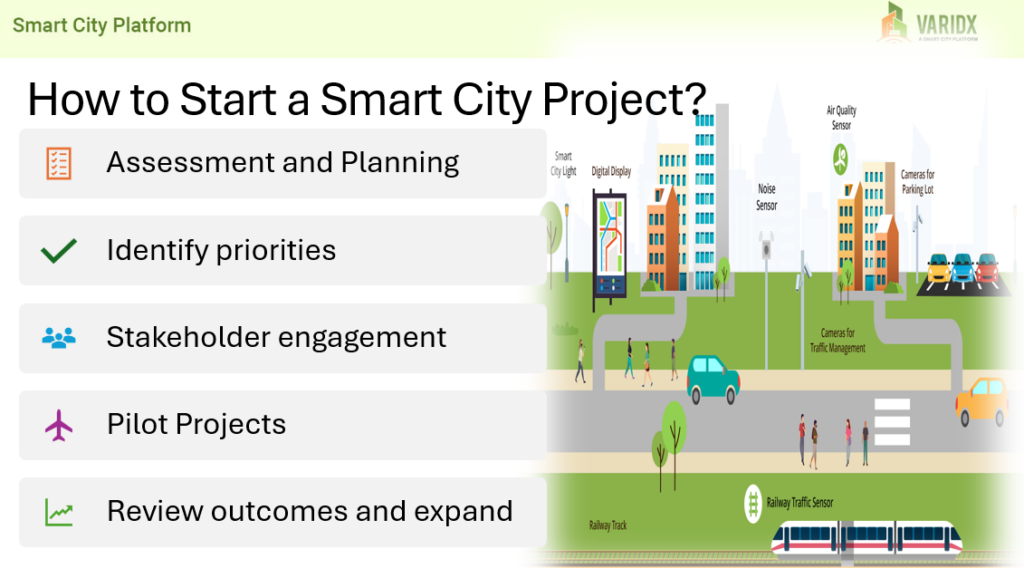
Key Steps for Implementation
1. Start with Assessment and Planning
Before diving into technology deployment, cities must thoroughly evaluate their existing infrastructure and capabilities. This includes:
- Network connectivity coverage
- Existing sensor deployments
- Data management systems
- Technical expertise within departments
- Current digital services
2. Identify Clear Priorities and Problems
The most successful smart city initiatives begin by addressing specific community challenges. For example, the Town of Morrisville started with practical problems in their parks department:
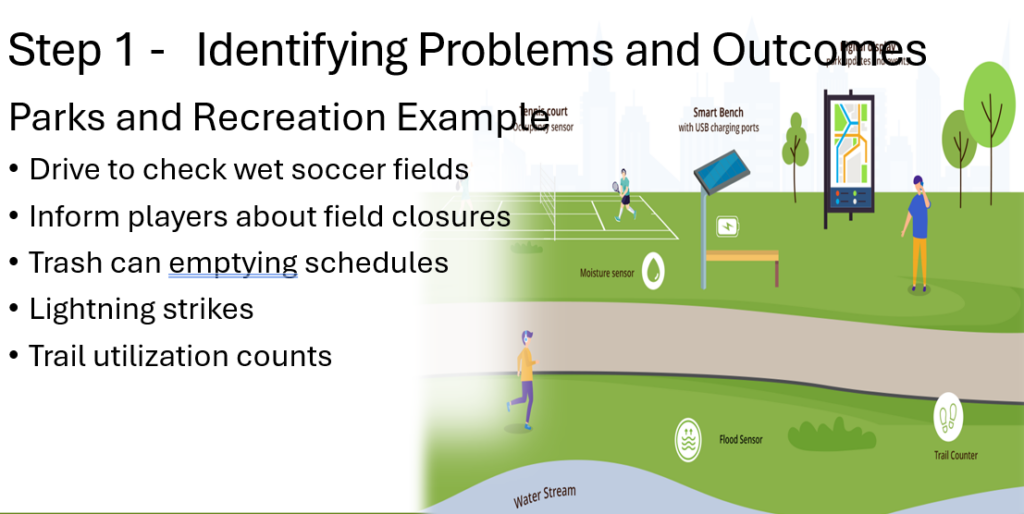
- Checking wet soccer fields manually was time-consuming
- Inefficient trash collection schedules
- Limited data on trail utilization
- Need for better field closure communication
3. Choose the Right Pilot Project
When selecting an initial project, consider these three key criteria:
- Quick Implementation (3-6 months)
- Budget-Friendly (Under $50K investment)
- Direct Citizen Impact
-
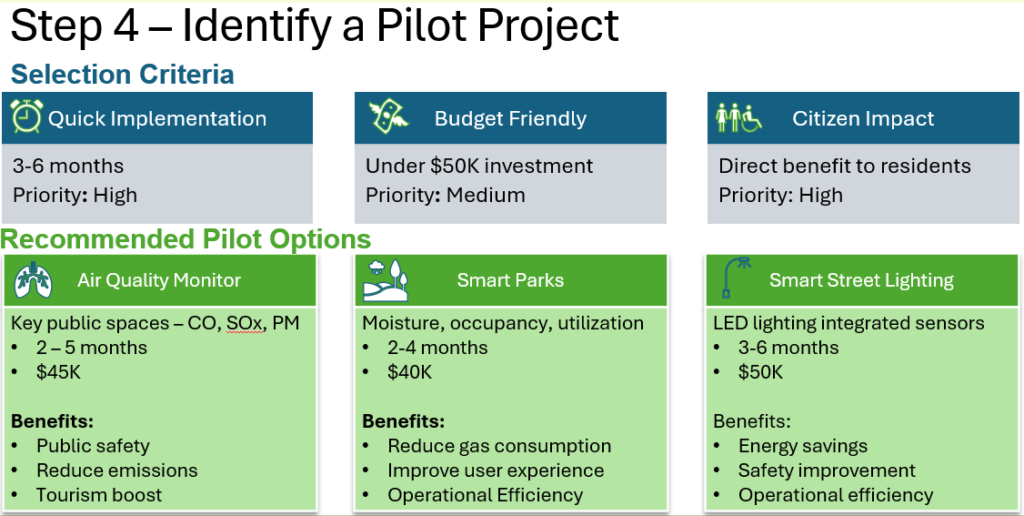
Pilot project key considerations: timeline, budget, benefits
Some recommended pilot options include:
- Smart Parks (moisture sensors, occupancy monitoring)
- Air Quality Monitoring
- Smart Street Lighting
4. Secure Stakeholder Buy-in
As highlighted in our previous post about implementation strategies, stakeholder engagement is crucial. The webinar emphasized creating a comprehensive engagement framework including:
- Core city leadership – This group drives strategic direction and ensures alignment with city priorities. Key players include city manager, CIO, and department heads. Emphasize: Governance and decision-making authority.
- Citizens and community groups – Residents are both beneficiaries and active participants. Engage through digital platforms and town halls.
- Local businesses – Local businesses bring expertise and investment opportunities. They help identify economic development priorities. Such as downtown smart parking initiative.
- Technology partners – Provide technical expertise and implementation support. Help evaluate solution feasibility. Bring experience from other cities. Instead of just buying technology, build long-term partnerships
- Infrastructure providers – Essential for system integration, who manage critical city services
5. Measure and Communicate Benefits
Successful smart city initiatives track and communicate clear benefits across three key areas:
Financial Benefits:
- 20-30% reduction in operational costs
- ROI within 24-36 months
- 10-15% improvement in satisfaction
Community Impact:
- 20-50% improved community engagement
- 24/7 digital service access
- Enhanced citizen experience
Environmental Impact:
- 10-25% reduction in energy consumption
- 10-20% decrease in carbon emissions
- 10-25% less water waste
Real-World Success Stories
The webinar shared several inspiring case studies, including Morrisville’s award-winning Connected Parks initiative. Starting with a focused pilot project using trail counters, they expanded to include flood sensors and other smart technologies, demonstrating how cities can grow their smart initiatives incrementally.
Avoiding Common Pitfalls
The presentation highlighted several key considerations to ensure success:
- Avoid the “technology first” trap – start with citizen needs. Example: Cities buying IoT platforms without clear use cases. Better approach: Start with specific problems to solve.
- Don’t fall for the “build it, they’ll come” myth . Without community engagement, the result will be Low adoption rates and wasted resources. For better results, engage stakeholders from day one.
- Skip the “big bang” approach. Trying to do everything at once, creates overwhelming complexity. Instead: Start small, prove value, then expand.
Looking Ahead
As we move through 2025, cities have more opportunities than ever to leverage smart technologies effectively. The key is to start with clear objectives, choose focused pilot projects, and build on successes while maintaining strong stakeholder engagement.
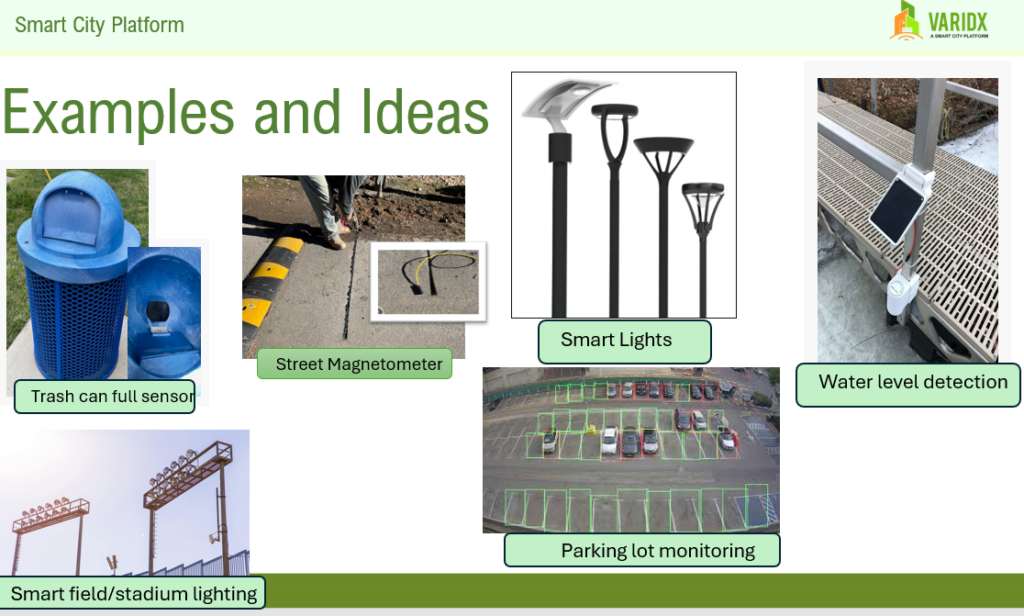
Remember that becoming a smart city is a journey, not a destination. By following these structured steps and learning from successful implementations, cities of any size can begin their transformation into more efficient, sustainable, and livable communities.
Ready to start your smart city journey? Our next post will dive deeper into specific technologies and solutions that can help you achieve your smart city goals. Stay tuned!
Want to learn more about smart city implementation? Check out our previous posts on Smart City Technologies and Solutions and Building a Smart City Foundation.



